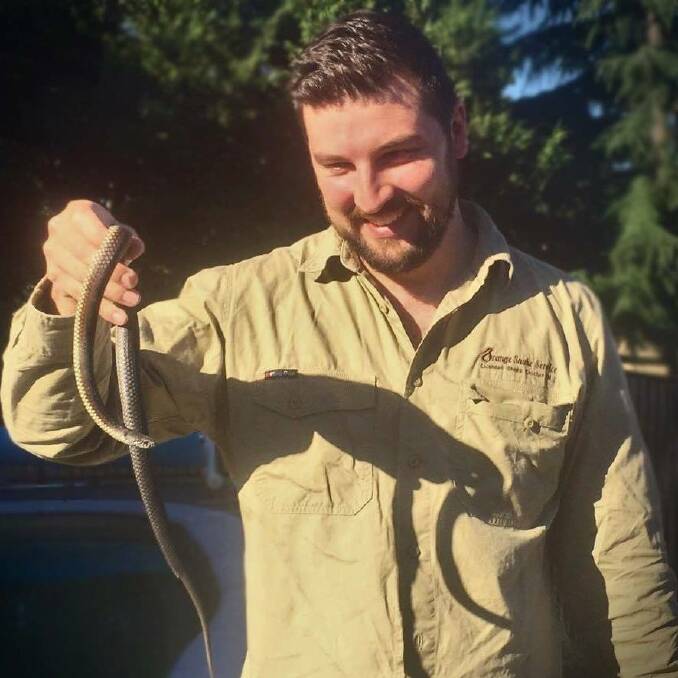The first baby snakes are being born and some of them are a little ahead of time but an Orange snake catcher said there is nothing to worry about.
Subscribe now for unlimited access.
$0/
(min cost $0)
or signup to continue reading
Orange Snake Services snake catcher Jake Hansen was recently called to retrieve a baby copperhead, which unfortunately died.
Mr Hansen said it is the right time for eastern brown snake eggs to be hatching.
He said the brown snakes are the only snake in the area that lays eggs, which look like five centimetre long Tic-Tacs.
Once born, their distinguishing feature is a black marking on the back of their head however, other than that baby brown snakes can either be plain brown or have dark bands.
“Further to the coast, the more banding, that banding can vary, the all have that black mark on the back of their neck,” he said.
“Typically in colder climates you start live breeding, it’s thought that live breeding started in harder temperatures.”
He said with giving birth to live young the snakes have complete control until the babies are born, unlike those that hatch from eggs which are at the mercy of the weather.
Other venomous snakes such as copperheads, which are the most common in the Orange area, as well as tiger snakes and red-bellied black snakes usually give birth to live young at the end of February or the start of March.
“But you do get exceptions, the other day we had a baby copperhead,” he said.
He said there are a few misconceptions about baby snakes.
“The biggest one I always hear is that baby snakes don’t have control of their venom, that’s a fallacy, the idea of a snake regulating venom has never been proven,” Mr Hansen said.
“Even if it were true, the amount of venom that a baby snake can give you pales in comparison [to a mature snake].”
However, he said there is a difference in the way the venom reacts from when brown snakes are babies to when they are adults.
He said the babies mostly have a reptile based diet and have a neurotoxic venom which has a paralytic effect but as they get older snakes they eat more mammals and their venom has a procoagulant effect which clots the blood.
“That’s the biggest issue in humans, they can have a cardiac arrest or severe haemorrhage,” Mr Hansen said.

Mr Hansen said it was also very rare to see a baby snake in the wild.
“They are so small it’s so easy for them to stay hidden,” he said.
Mr Hansen said baby eastern brown snakes are only about 15 centimetres long, but if people do come across one at home, put a bucket over it and contact a snake catcher.
“People often call me and say we’ve got a baby snake, when I get there it’s a 50 centimetre long snake and a it’s a couple of years old,” he said.
“People are surprised how long it takes for a snake to grow.
“You can imagine there’s a pretty high mortality rate [among baby snakes].”
Due to their small size at birth he said they are vulnerable to attacks from birds and other wildlife and baby snakes that are found inside homes are usually brought in by cats.
Mr Hansen said people should also not worry about mother snakes being nearby if they do see a baby snake because Australian snakes are not maternal and once they lay their eggs or produce their young they go away.
“When snakes are born, they go on their way, snakes in Australia are pretty bad mothers,” he said.

